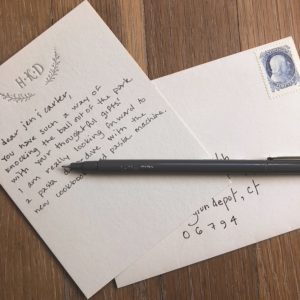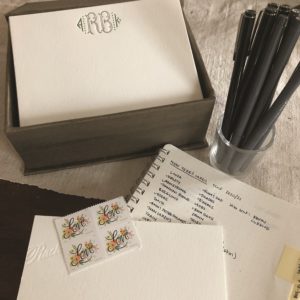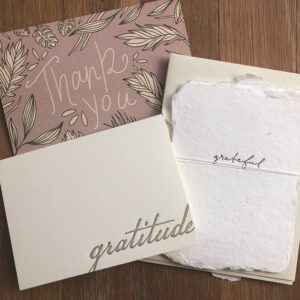“Gratitude.” I feel like this word has taken on such power in recent times. I know I am not alone in trying to make being mindfully thankful a daily practice. What’s not so routine for most of us, though, is putting those thanks in writing.

These quiet January days are a good time to reflect on the generosity of friends and family and make our gratitude tangible with a thoughtful thank-you note.
Given that many of us were separated from loved ones during the holidays, our notes of appreciation may take on more significance than usual this year. A well-written card can capture the joy you felt when you received a gift from someone far away, and convey, in return, a grateful hug — with words instead of tightly wrapped arms.
When a person handwrites a note, it shows that they made an effort to be thoughtful with their words, to find that snail-mail address, to get to the mailbox. But the main reason a handwritten note is so powerful is that our handwriting is a part of us. Seeing a friend or family member’s handwriting makes me feel connected to that person. It doesn’t matter whether their writing is messy or neat, printed or cursive; it is their own unique stamp.

The idea of writing a thank-you note can be daunting. One of my strategies is to clear off a writing spot and bring out a box of nice note cards. I am, admittedly, a lifelong paper nerd. I realize that not everyone’s happy place is anywhere fresh notebooks and brand-new pink erasers are within reach. But I do think it helps to have a stash of nice cards, pens, and postage stamps on hand.
People have a tendency to overestimate the time and effort it will take to write a note, just as they underestimate how appreciated their effort will be. Just start. I find that once I get the first sentence down, the words start to come more easily. And keep in mind, they don’t need to be many. According to etiquette expert Colleen Rickenbacher, a thank-you note should take only three minutes to write and the body of the note needs to be only three sentences long (not including the greeting and closing lines.)

A thoughtful note does a little more than just acknowledge the gift itself. Consider mentioning how it will be used or how it inspires future action. For example: “Thank you for giving me a copy of the Mastering Pasta cookbook. I look forward to cooking one of these special recipes for you when the days of dinner parties return!”
I hope thinking of note writing in these ways will make the task feel more approachable. You can be sure your note will bring joy to the person who receives it. At a time when everyone could use more love and gratitude, I say, let’s put pen to paper.
Heidi Daniels owns the Customs House Fine Papers in Wellfleet and Parchment on Nantucket.



